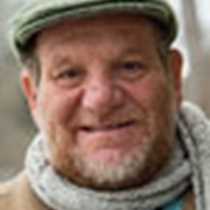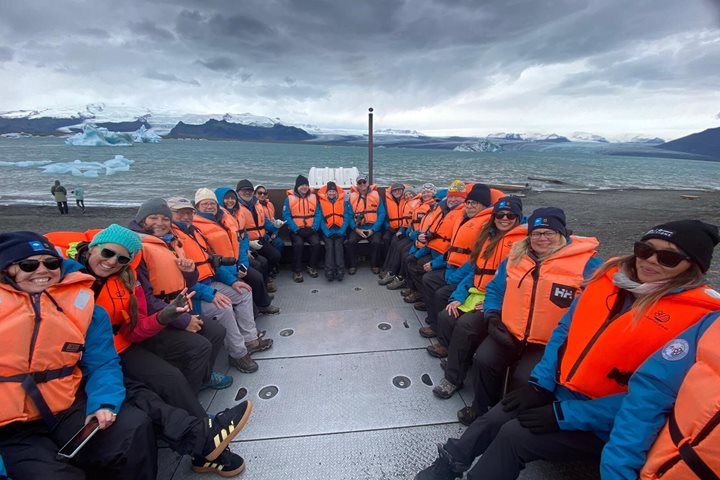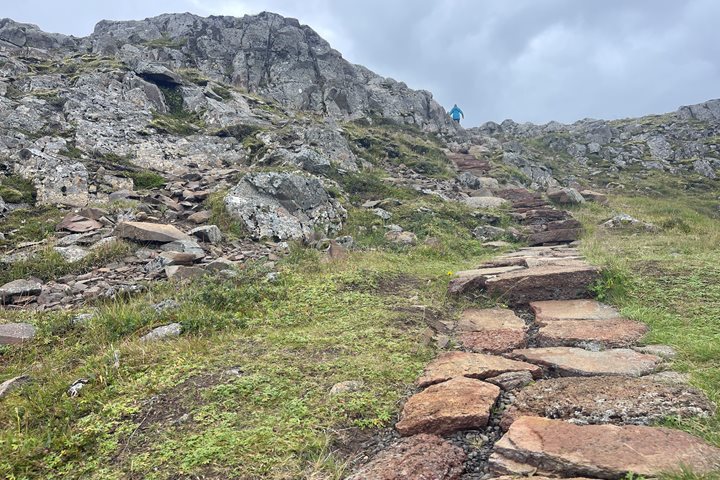As everyone began to stir from bed this morning we had already arrived at our first destination for this adventure, the Latrabjarg Cliffs, Europe’s largest bird cliffs. Centuries ago, volcanic eruptions after volcanic eruptions laid down Tertiary basaltic outflows that today provide the home for countless numbers of puffins, guillimots, kittiwakes, fulmars, and an astounding 40% of the world’s population of razorbills.
At first, you think that the lens with which you view the cliffs must need a serious cleaning, then you realize all those specks of dust are actually thousands of birds flying along the cliff face. As our ship sails along the length of the cliffs, there is a gauntlet of birds on either side of the bow, that quickly descend beneath the waves as we motor towards them. Spread out before us is a smorgasbord of seabirds satisfying every appetite for different species on their lists. Finally, breakfast was calling and we retired inside for our first meal of the day.
The rest of the morning was filled with the formalities of learning about life on board the ship. Introductions to staff, and Zodiac procedures, and then just before lunch, an introduction to photography by Eric our photo instructor.
In the afternoon we moored near a little piece of paradise on the northwest coast of Iceland, Flatey Island. Appropriately named, this little island is mostly flat, which made it a prized place for early Nordic people to farm. Situated in an ideal, rich marine ecosystem, it is no wonder why it was one of the earliest Viking settlements in Iceland. It has a rich historical significance as the Flateyjarbok (Book of Flatey) produced in 1387 somehow made its way here to this island and was kept here on a farm for more than two and a half centuries before it was taken away when the Danish controlled Iceland. It was finally returned to Iceland in 1971 to a great fanfare. It is estimated that more than 20,000 people turned out for the return of this precious manuscript. Now the island has only two year-round families inhabiting the island, but once this was a major trading post during the Middle Ages, and many a Viking adventure started here in Flatey as they left to explore places like Greenland, Baffin Island, Labrador, and Newfoundland. It is hard to believe, but even harder once you have visited Flatey, an island that you can walk completely around in little more than an hour.
Now, Flatey is mostly a summer community with scarcely more than 20 colorful homes. We strolled along the bird cliffs, walked through the small grouping of homes, and bargained with a few children selling hand-painted rocks to us visitors. There is a small hotel and a wonderful yet simple restaurant where we sampled a little local flavor–a nice place to have a cup of tea on a rainy day. I can attest to the rhubarb cake, but any of the sweet desserts will satisfy even the most distinctive palettes. After thinking about it, I can’t imagine any self-respecting Viking settling anywhere other than this pastoral little island.









